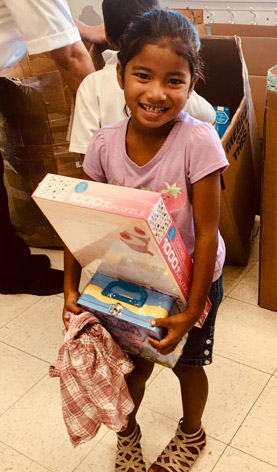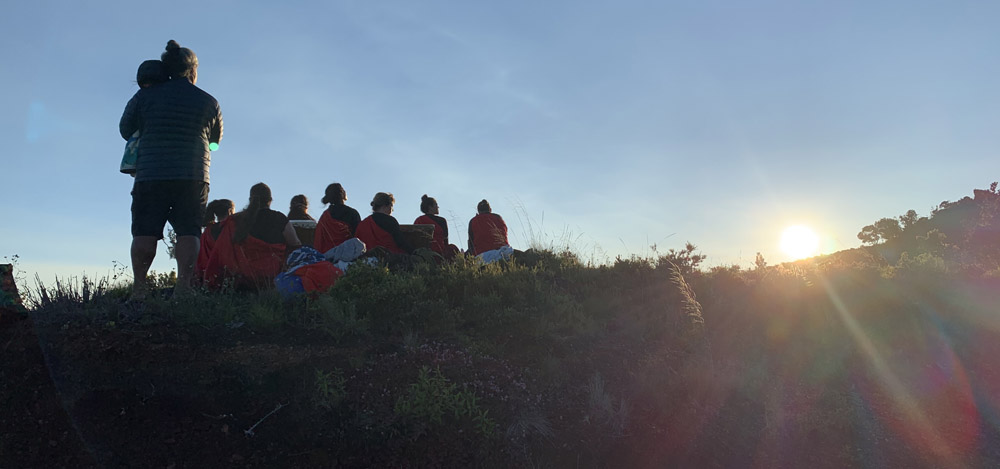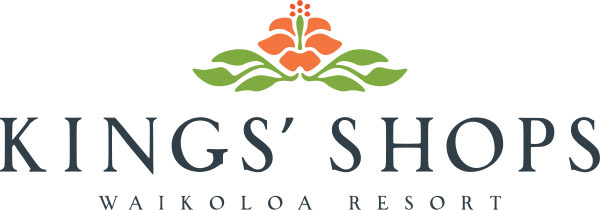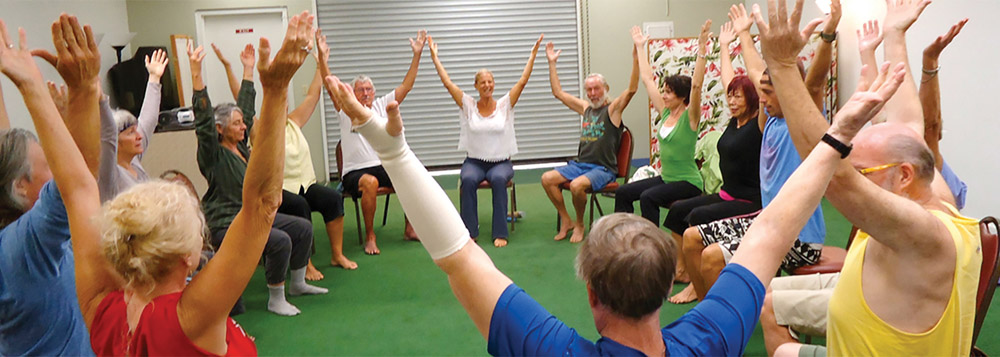
Tutu’s House: Celebrating 25 Years of Community, Health, and Wellness
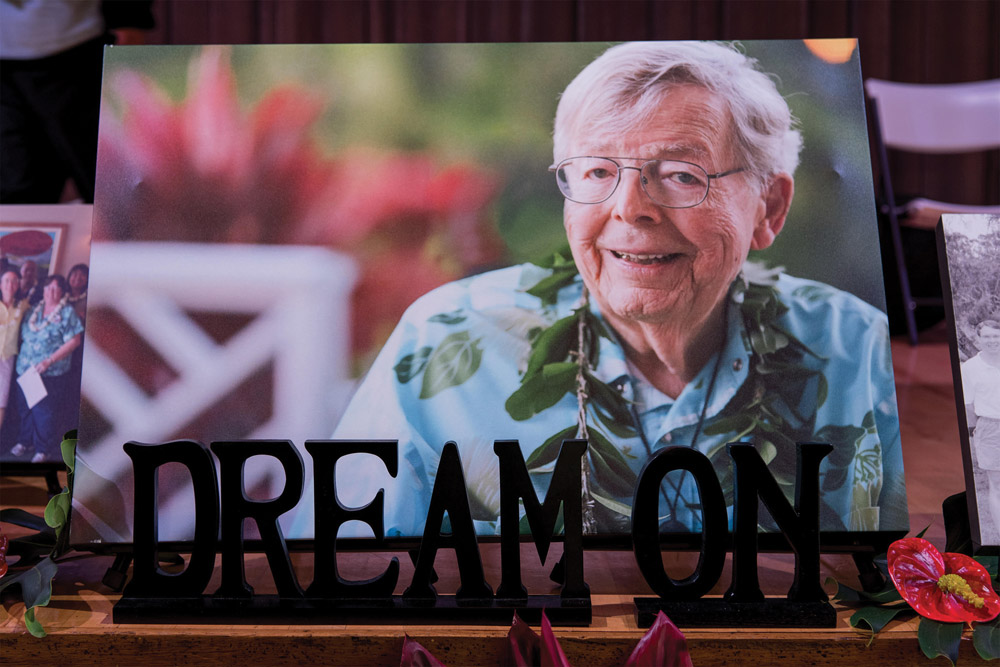
By Jan Wizinowich
Nowhere is the aloha spirit of the Waimea and Hawai‘i Island communities more evident than at Tutu’s House. Dropping by on any given day, one can find a constant flow of activities where community members are making connections, building relationships, sharing new skills, and seeking health and wellness information.
Tutu’s House has thrived for the last 25 years as the result of the heart/mind connections of a community of people who believe in the power of love. Based on Hawaiian values, Tutu’s House is a place of wisdom, knowledge, and acceptance.
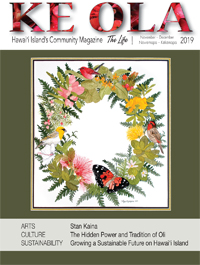
Tutu’s House was primarily the brainchild of Earl Bakken, who was encouraging North Hawai‘i Community Hospital to include a resource center in the hospital. Originally slated to be a part of the NHCH, by the time the hospital finally opened in 1996, Tutu’s House had been in operation for two years and had outgrown any purview or space that might have been available at the hospital.
Tutu’s House is a blend of western, complementary, and cultural approaches to health and wellness. At the time of its inception, Earl was on the board of the Friends of the Future (FOF) and had a special focus of health and wellness. The inventor of the implantable pacemaker, Earl was steeped in medical science but saw the importance of relationship beyond technology.
“His idea was a combination of tech and love. He noticed that it [the pacemaker] worked better depending on who installed it. High tech and high touch need to go together,” said Richard Spiegel, who gave Tutu’s House its name. “We were all looking at how to manifest that and make it useful for individuals and the community,” he added.
Working within FOF, Earl and a handful of like-minded community members laid the philosophical foundation of a place where people could come for non-judgmental acceptance and the wisdom that only a tutu (grandmother) could provide.
Program Leaders
A gem with many different facets, Tutu’s House has been the beneficiary of a series of dedicated program leaders. When it opened in 1994, long-time community members Noni Kuhns, program leader, and Linda Kalawa, ‘ohana facilitator, were at the helm. Having led cancer retreats using alternative therapies, Noni came to the attention of Earl, who enlisted her help to get the then-unnamed resource center underway.

“When people saw their [Noni and Linda’s] faces, they really had a connection to them in the sense that if they were part of it, it must be a good place. They gave it its initial form, what it was meant to be, based on the importance of relationship and connection,” explained Susan Maddox, FOF executive team leader.
During the first seven years, the Tutu’s House calendar provided a range of classes to promote healthy living including vibrational healing, meditation, listening partnerships, sleep wellness, and biofeedback. These were enhanced by creative offerings such as hula and ‘ukulele.
In 2001, the next program leader, Dana Moody, came to Tutu’s House. Originally a photojournalist, Dana approached Tutu’s House with an offer of a slide presentation of the around-the-world journey she took with her sister, Peggy, who also offered a series of communications classes.
In the six years Dana was there, she guided Tutu’s House through two moves from the original tiny space in Parker Ranch Center to a larger space there, and finally to their current location in the rear building of the Kamuela Business Center.
Dana continued to explore the intersection of medical fields and alternative approaches to health and wellness, adding yoga and women’s groups to Tutu’s House, including a women’s cancer support group. During her tenure, she also traveled to Washington DC to share the Tutu’s House story at a health and wellness conference.
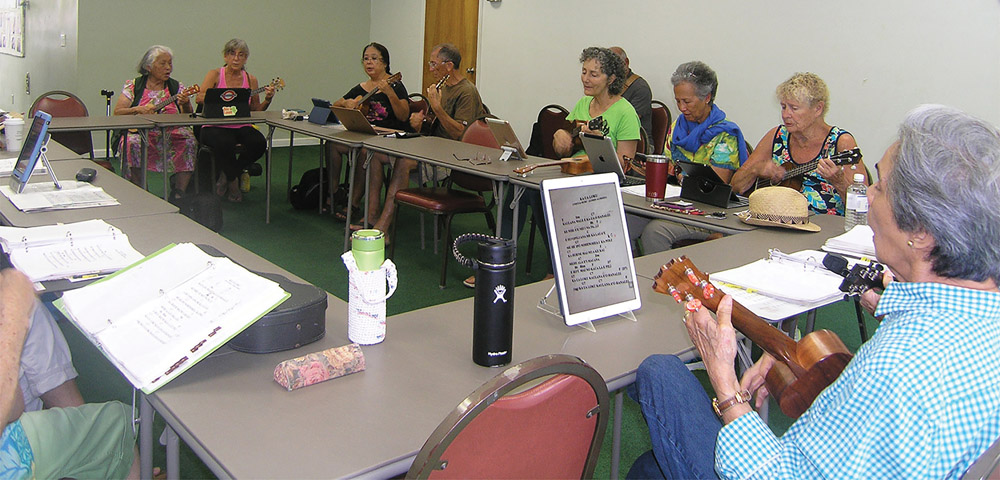
The current program leader, Lorraine Urbic came to Tutu’s House from a life of community service through the foster care system. Tutu’s House provided space for her to recruit and train foster parents and gave her a longtime appreciation of the programs available.
“I was always intrigued by Tutu’s House but with working and raising children, I couldnʻt come. What Iʻve tried to do during my 12 years here is to expand the program to have things scheduled after-hours and on weekends so that people who are 40-hours-a-week people can enjoy what can happen here,” explained Lorraine.
Offerings
During those initial years, Tutu’s House “continued to expand that definition of health and wellness. It took on a life of its own and it wasnʻt by design. There wasnʻt that notion that weʻre going to do this, this, and this, and we were going to work towards specific outcomes. It was allowed to unfold in the way it worked in the community and the way it was effective for folks,” reflected Susan.
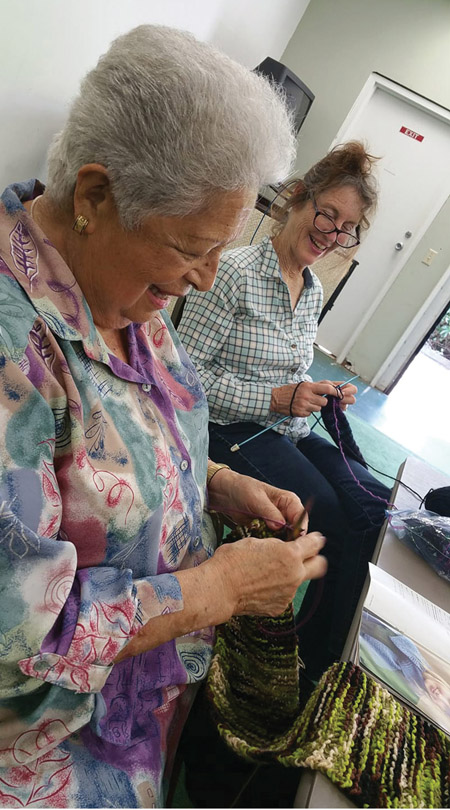
Along with funding resources, Earl was a conduit through which Tutu’s House could be connected to the world community, and such pioneers of mind/body medicine as Dr. Oz and Harvard professor Dr. Herbert Benson, to name just a couple.
With a philosophy based on community connections and relationships, Tutu’s House has provided the space and support for community programs that are multifaceted and continue to broaden the concepts of health and wellness.
“Every person who came into Tutuʻs House was a gift to me and my goal was finding out what that gift was. Either a story they shared or an experience and a learning lesson,” remembered Joan Campbell, Health Maps leader.
The quilters’ group meets on a regular basis and has expanded to the dyeing of fabrics. FOF Resource Development Leader Michelle Medeiros asked: “What does a creative endeavor have to do with health? The longevity of a person can be predicted based on the number of social interactions that person has on a daily basis. Also, the quilting and knitting groups check up on each other, and the quilting group even created a driving schedule for a member that had to go to Hilo for chemo.”
Space is open to anyone who has a passion for something that they want to share; credentials are not necessary. One of the most successful programs has been the writers’ group, began by the late John Holland. “He showed up week after week and sat in that room and wrote. Eventually one or two people came and now it’s grown in number and to professional levels of publishing and readings,” said Lorraine.
The Tuesday morning ‘ukulele group is another longtime offering. Began by Aunty Elaine Loo and carried on by Aunty Margie Spencer, it continues, now led by a group member. Participants make joyful music, and share laughter and lunch.
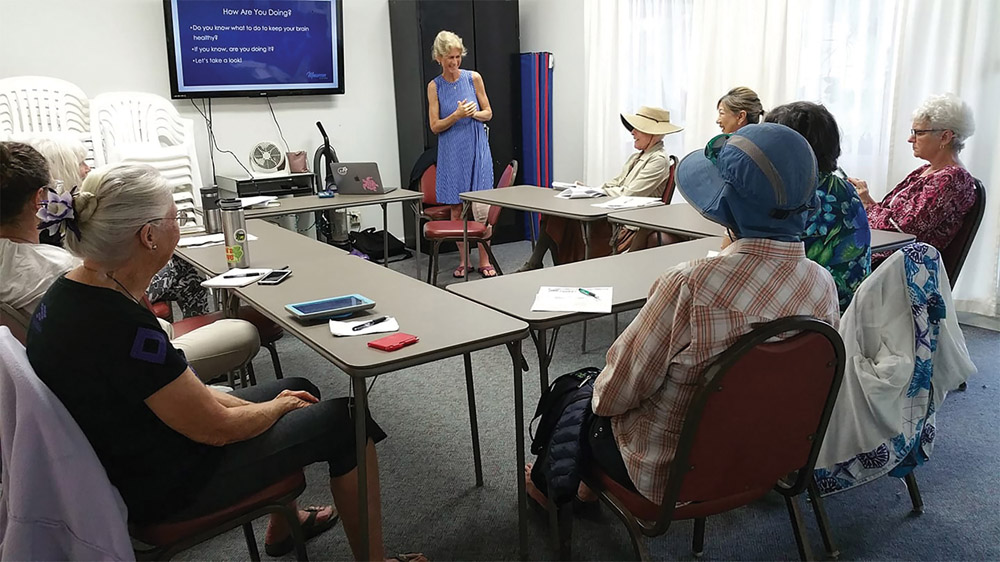
The Future
For the last 25 years, Tutu’s House has touched the lives of many people and will continue to do so. What Tutu’s House will look like in the next 25 years will be guided by the reflections and inspirations of community members. “Because weʻre celebrating the 25th anniversary, I want to meet with people to ask them about their vision. Iʻd like to serve more people and have more variety. We are always changing because we have new participants,” said Michelle.
While the world and our tiny community is constantly changing, Tutu’s House will continue to provide the conditions for positive growth, where Waimea residents and beyond can sink roots and strengthen each other. ❖
Nested Programs at Tutu’s House
Health Maps and Earl’s Garage were additional dimensions of the program offerings of Tutu’s House, expanding the range of people served.
Health Maps
Seeing the need for health education and information sources, Earl also guided an adjunct program called Health Maps in 1996 and hired public health specialist, Joan Campbell, to assist. The internet was really starting to grow and to make a dizzying amount of medical information available.
“They would have a diagnosis where they were being challenged by their health and they wanted to learn more. Iʻd go online and help them find information about it,” explained Joan.
This was balanced out by the wisdom of Hawaiian health practices. One early mainstay was la‘au lapa‘au practitioner, Henry “Papa” Auwae. Papa offered many presentations on traditional Hawaiian healing, which blends spirituality with tangible plant medicines. “One of my favorite times was when Papa Henry Auwae would come in. He shared so much about Hawai‘i and healing,” said Joan.
Although Health Maps focused on science, it was embedded in the Tutu’s House philosophy of love and connection. “Opening up and talking to people about your life, and sharing and taking the time to do that was super important, and part of the healing process. That was foundational for me,” remembered Joan.
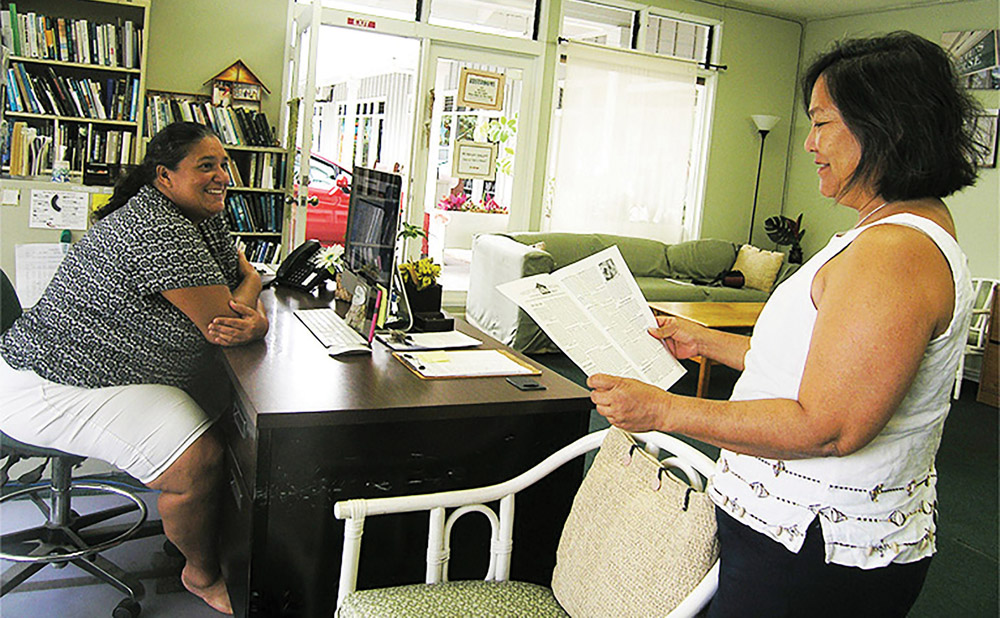
Earl’s Garage
Earl’s Garage is a program that was near and dear to Earl Bakken’s heart. Began in 1999 with help from Parker Ranch, it is a re-creation of sorts of the garage where, with only a few basic tools, Earl’s tinkering led to the invention of the implantable pacemaker.
Originally developed by Michelle Medeiros, who had arrived at Tutu’s House in 1998 as a volunteer and six months later was on staff, Earl’s Garage provides a place where kids can follow their curiosity, invent, and explore their world. Twenty years later, it’s still going strong. “It’s what Tutu’s House is all about. The sharing of our own gifts and passions. It helps kids recognize the gift of curiosity and how to develop it,” recalls Michelle.
For more information: tutushouse.org
